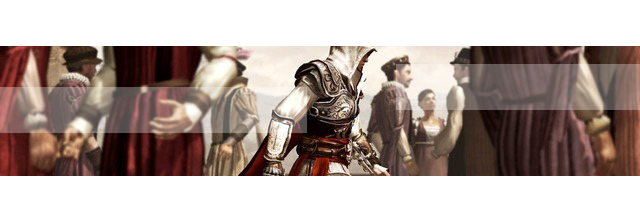This is a short piece in my series of articles on the Assassin’s Creed games in order to talk about some of the shifts that were immediately apparent between Assassin’s Creed and Assassin’s Creed 2. More posts on the second game in the series are going to follow in the very near future.
1.
AC2 has made a decision to be much more “cinematic” than the first game. The opening sees us following along behind Lucy, our key informer about the goings on in the world of the game, as she shoots and beats up various Abstergo agents on the way out of a building. The first game ends on an informational cliffhanger, with many questions left unanswered, and the second game signals in its very opening that we’re not going to get a set of procedural answers. Instead, we get movement, action, and fluid; tonally, we’re in another world altogether.
2.
Cutscenes. Everything takes place in a cutscene, and compared to AC2, the first game is completely cold and austere. When Altair received missions, you were confined to Resident Evil-style rooms where the angle changed. Now we follow Ezio around with a dynamic camera, meeting a number of different colorful characters. This is a turn toward the Grand Theft Auto mode of world creation, and I think the game is less interesting for it.
3.
In Assassin’s Creed, we have emails as our form of “metacommunication” in the game — that is, when we read the emails of the Abstergo people, we are seeing the world that it outside this very small room we are trapped in while playing as Desmond. In Assassin’s Creed 2, this mode of communication becomes the database. The email account was external to the world of assassins — we had to hop out of the Animus, walk around, and read the emails. Now all we have to do is find a different menu. The database is omnipresent, and we always need to be updated to stay the most current with information.
4.
The game loses all of its interesting interface information. Now it isn’t apparent that time is speeding up, rewinding, etc. Instead everything happens “in time” in the sense that we aren’t reliving memories but instead we’re creating history; we’re not trying to maintain fidelity to genetic memory but rather we’re living it in real time.
5.
There are lots of gameplay changes, and I will address them in a bigger AC2 post, but some of those are: introduction of looting, blending into crowds, and the movement of the player character.

